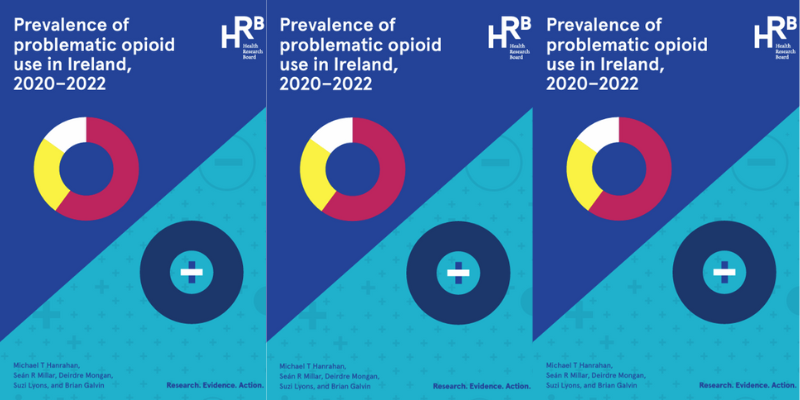New School of Public Health report on problematic opioid use in Ireland published

The study, commissioned by the Health Research Board (HRB), was led by Dr Seán Millar from the School of Public Health UCC.
Problematic opioid use is a significant problem in Ireland and across the world. Opioids, which include heroin, morphine, methadone, codeine, hydrocodone, fentanyl and tramadol, are addictive, sedating, narcotic drugs. While some of these drugs have valid medical purposes, their misuse as ‘street drugs’ can lead to many health and social issues for users and society. However, measuring the prevalence of opioid use is challenging.
Given the nature of this population, a simple head count is not feasible and general population surveys are known to be ineffective at capturing this ‘hidden’ population. Because people who use drugs fear stigmatisation and are often marginalised in society, the European Union Drugs Agency (EUDA) recommends the use of indirect approaches, such as the capture-recapture (CRC) method, to estimate the prevalence of problematic (high-risk) drug users.
The new study estimates the prevalence of problematic opioid use in Ireland from 2020 to 2022 utilising a four-source CRC methodology. The analysis incorporated three data sources from opioid substitution treatment records obtained from the Central Treatment List, which includes clinics, general practitioners and prisons. The fourth data source was provided by the Probation Service.
An electronic copy of the report is available from the National Drugs Library at: www.drugsandalcohol.ie/42700
Main findings from the report include the following:
- In 2022, it was estimated that approximately 19,460 people in Ireland had problem opioid use
- A significant majority of these people were male (68%)
- Over three-quarters (75%) were in the older age group of 35–64-year-olds
- There were an estimated 11,100 problem opioid users in county Dublin in 2022, a rate over three times higher than in the rest of Ireland
The report also found that opioid use among 15–34-year-olds has declined, while levels of problem opioid use among people aged 35–64 have increased, with over three-in-four problem opioid users in this category.
Commenting on the report, lead author Dr Michael Hanrahan said:
“The continued decrease in opioid use among younger people, particularly in the 15–24 age group, is positive, and may be due to several factors. For example, we know from other studies that heroin, which is the main opioid used in Ireland, is viewed more negatively by young people. Also, improvements in addiction services may be helping to break the cycle of young people introducing their peers to opioids. The rise in opioid use within the 35–64 age group suggests an ageing cohort effect, as the proportion of those in this older age group has increased by almost one third since 2014.”
HRB Chief Executive Dr Mairead O’Driscoll concludes:
“The HRB continues to provide a clear picture of the level of drug use within the population and trends among users. This enables policy makers and service providers to evaluate the effectiveness of interventions and predict where action is needed.”
The report is available to download here Prevalence-of-problematic-opioid-use-in-Ireland-2020-22
An article in the Irish Examiner can be read here.
School of Public Health
Scoil na Sláinte Poiblí
Contact us
4th Floor, Western Gateway Building, Western Road,
